Sending emails is a relatively easy process.
All you need is an email marketing service, set up your account, choose a template, and then… well, then you need to create your email content, of course!
This is when things can get a little tricky. A good piece of content will work, however, great email marketing content that converts will help you get your business to higher heights.
In this guide, I'll provide my top tips to help you create great email content, focusing specifically on:
- How to write effective subject lines
- Writing for your target audience
- Optimizing content for different devices
- Tips for writing concise content
- How to use high-quality visuals
- Writing compelling CTAs
- Creating non-spammy content
- The benefits of social proofing your content
- Prioritizing your subscribers
1. Create subject lines to impress your audience
Think of your email marketing campaign as your fancy restaurant.
Multiple customers will pass by and take a look at your menu. A couple of them will go inside; others will simply ignore you.
But, when you hire an experienced host to attract their attention and convince them that your restaurant is the best, the chances of getting more customers increases.
Similarly, to make your content stand out, you need to make a great first impression. Otherwise, your recipients will send your campaign to their trash folder or, worse, flag you as spam.
To create an impressive email marketing subject line, you need the following ingredients:
- A clear message
- The benefit of opening the email
- An impression trigger
When you combine all three, you’ll get something that looks like this:

This subject line from Burt’s Bees hits all the right notes.
First of all, the message is pretty straightforward. The words “Mystery Box” are intriguing enough to make a subscriber open the email and engage with it.
And, of course, the addition of “before they’re gone” adds the right amount of FOMO (fear of missing out) to increase their desire to click.
A great subject line is the first step to take your content to the next level and improve your conversion rate optimization (CRO).
2. Write for your target audience
Now that you created an impressive subject line, it’s time to plan your email.
To avoid writing irrelevant content, you need to take into account your target audience and what they want to see when they open your email.
For example, let’s take a look at the content from our previous example:
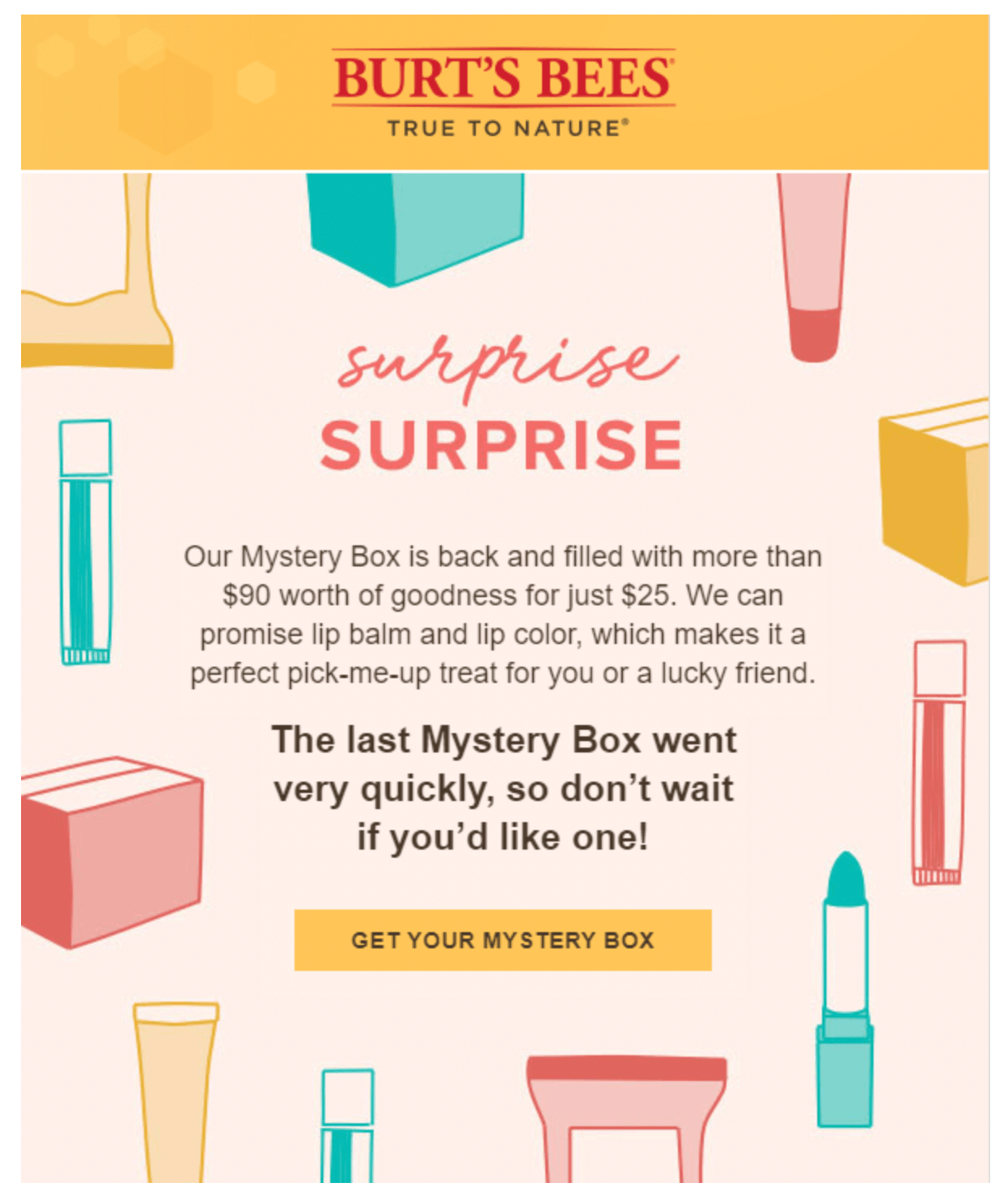
The first thing you notice is that the copy is short and easy to understand.
The tone is also friendly and the email uses different fonts to make it more playful, fitting the style of the B2C beauty industry like a glove.
However, if you want to write copy for a SaaS business to boost B2B lead generation, you need to consider what your B2B audience wants to see.
Anything that feels inappropriate or comparatively less professional might puzzle your more professional subscribers and prevent them from clicking.
To give you an example, here’s an email from Hootsuite:
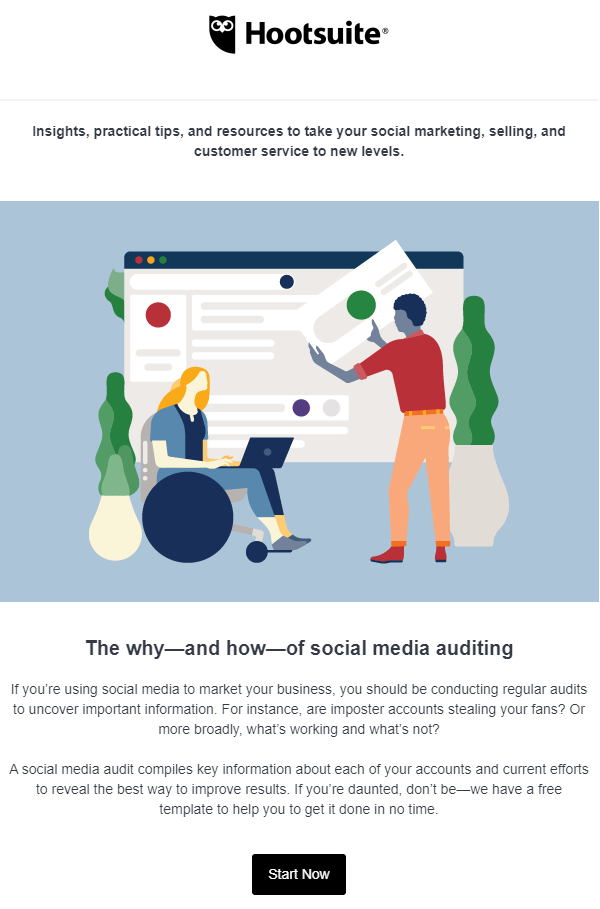
From the language to the structure of the content, you'll notice that the campaign is meant for a different audience.
Using Hootsuite’s formula to target Burt’s Bees’ customers would look bizarre to them.
So, always keep in mind that different audiences need different types of content, and don’t forget that your audience might consist of different age groups and genders.
In this case, you can leverage the power of segmentation to divide, let’s say, your female and male subscribers, to deliver content that's relevant to them.
Bonus Tip: Grammar and vocabulary are important when you write your emails. Make sure to avoid any common grammatical errors to ace your campaigns.
3. Optimize for specific devices
Having great content is the first step to acquiring a loyal audience.
However, one thing you shouldn’t forget is that when you write content for them, you also write content for their devices.
This leads us to our next tip: never forget to optimize your preheader text.
For desktop users, your preheader text usually looks like this:
A great preheader text will offer extra information to incentivize your subscriber to open your email. And since your preheader text is just a single line, you need to make every word count. However, what happens when you target a mobile-first audience?
Below, you can see the above emails displayed through my mobile Gmail app. Notice anything different compared to the desktop version?
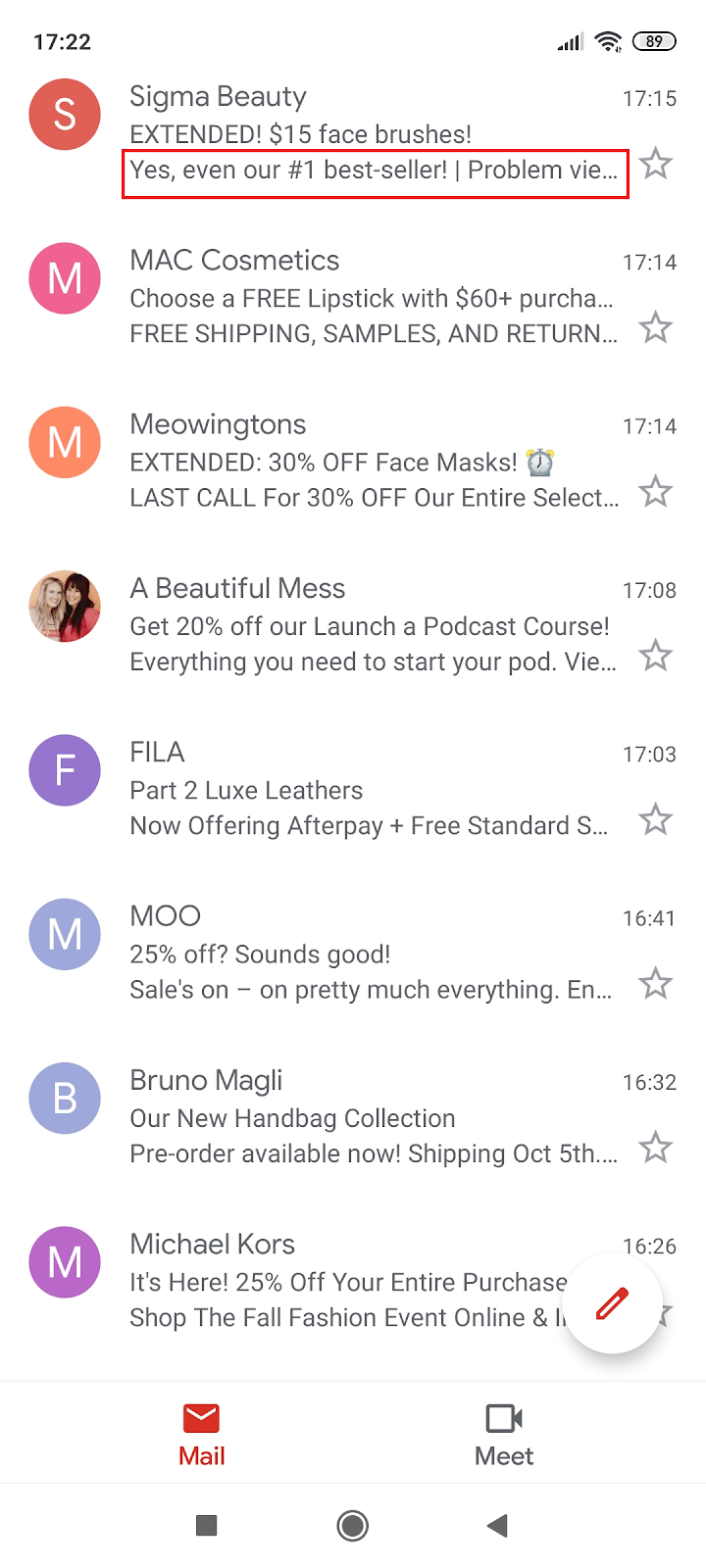
The screen offers limited space to display the preheader as a whole. This means that you need to optimize your preheaders based on your email subscribers’ devices as well.
It’s also worth mentioning that on Apple mobile devices, the space you get is even more limited.
So, make sure to take extra care of your preheader text as an integral part of your content.
4. Keep your content short and to the point
To paraphrase Hamlet, “Brevity is the soul of email content.”
Of course, when I say brevity, it doesn’t mean that you have to write just a few lines of copy. Even though, sometimes just a few powerful words accompanied by a nice visual is all it takes to convert your audience:

To ace your content, you need to consider your subscribers’ busy lifestyles.
To make their lives easier (and your business more profitable), you need to deliver easy-to-digest messages within seconds.
Don’t forget that along with their busy lifestyle comes their short attention span, which is about eight minutes long. Within those minutes, you need to intrigue your reader, lead them to your CTA and, consequently, your landing page or website.
After all, that’s where the conversion magic happens.
Here’s how Casper makes Hamlet proud:
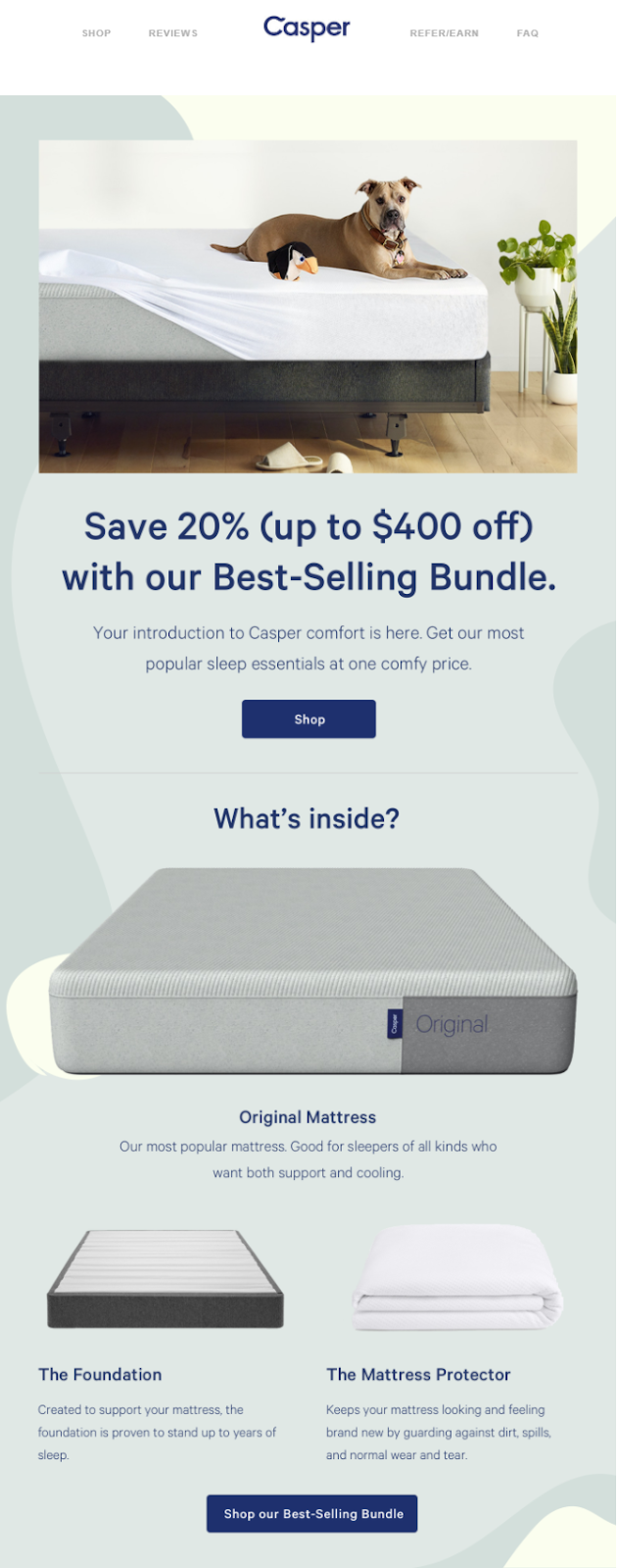
First of all, this email has a clear CTA and an amazing incentive to get subscribers to click on it.
However, that’s not the only thing that makes Casper’s example awesome.
As you can see after the CTA, the brand includes a clever “What’s inside?” section.
The copy is simple, addressing subscribers’ pain points and offering them the perfect mattress to cover their “support and cooling” needs.
Despite being short, the descriptions and the visuals show potential customers how to sleep better. And that’s exactly what they need from their new bundle!
5. Enrich your content with high-quality visuals
Speaking of visuals, I’m sure you’ve all heard that “a picture is worth a thousand words” already. This proverb is highly relevant to digital marketing. After all, consumers are very visual creatures, and they need high-quality images to convince them to act.
As part of every successful email marketing content, your images should complement your copy and vice versa.
Marie Kondo’s elegant welcome email, for instance, can show you the importance of using images to enrich your copy:

Marie has a clear idea of what her audience is looking for, and to give them a warm welcome, she adds a picture of herself doing what she does best: tidying up!
Looking at the master of tidying in action and reading her heartfelt message, new subscribers get the promise of “transforming their lives,” which is a pretty powerful message, if you ask me.
If you want to create better content for your audience, make sure to align everything to increase the impact of your messages.
And don’t forget, your visuals need to be of the highest quality to work. So, when you are about to use them, it’s important to edit your photos for better results. If you are using video in your email, be sure to properly imbed and link to your video.
6. Craft irresistible CTAs for your audience
The purpose of your content is to get your readers to become something more than simple subscribers.
A brilliant content that hits all the right notes will excite them and give your customer lifecycle marketing efforts a huge boost. So, what you need to turn them to the purchasing side is an irresistible call-to-action to seal the deal.
Here’s a great example from Ipsy:

What makes this CTA box stand out, apart from the bright pink color, is how well it works with the copy.
When subscribers read the headline, they will instantly be intrigued by the “Your First Glam Bag is Worth $50+.”
To make them click, IPSY chooses an action verb along with a first-person pronoun to make the deal more personal.
“This is my Glam Bag worth $50+,” thinks the subscriber. “So, I have to get it now!”
So remember, when writing CTAs, don’t forget to:
- Use actionable language
- Add urgency
- Pick the right colors for your CTA
- Don’t hide your buttons
7. Avoid spammy words
To make their content look appealing, many email marketers use specific language both for their subject lines and copy.
Words like “free,” “winner,” “deal,” or “guarantee” can be used to create messages that catch the eye.
But here’s the catch, these are some of the most common spam words an email marketer can use, this type of language also has the potential to get you reported as spam even though you might not be a spammer.
What’s more, the continuous reporting will eventually get you blacklisted by your Email Service Provider (ESP) and harm your sender reputation.
To create spam-free content, your subject lines are the first thing you need to pay attention to.

When it comes to avoiding the spam filter, try to avoid:
- capitalizing every single thing
- adding common spam triggering words
- doing both
The spam folder can be extremely detrimental to the success of your email campaigns. Be sure to avoid spam-triggering words to increase the legitimacy of your message and avoid spam traps.
Making your content look authentic will incentivize your recipients to take action without second-guessing.
8. Add social proof to your email content
Social proof is your secret weapon to make your content look better, especially if you have just started a new online store.
Social proof can range from star ratings to product reviews and testimonials.
In short, it's anything your potential customers could see and think, “since everyone else thinks it works/uses it, I should buy it, too!”
For example, Ugmonk frequently leverages user reviews to power up its email content. Take a look:
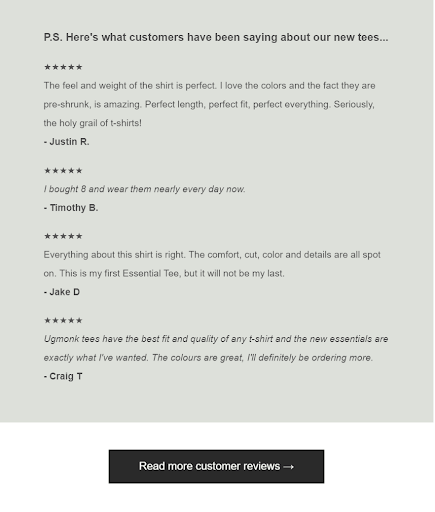
Not only that, but Ugmonk also places a CTA that incentivizes users to read more reviews.
For the brand, this piece of email content has great chances of converting new subscribers and showing them the value of the product.
If you want to write better content for your email subscribers, don’t forget that social proof can be a powerful ally.
9. Make it all about your subscribers
When your subscribers open your email campaigns, they want to see amazing content that will speak to them.
Of course, you can’t manually send thousands of emails to each subscriber.
What you can do, though, is leverage the power of personalization to make your email content more relevant to them.
Of course, to get your hands on personalization, you need advanced marketing automation features that your email marketing service can provide you with.
The easiest way to personalize your message is to:
- Use your subscriber’s name.
- A personalized subject line that feels like it was sent to the subscriber from another person.
- A personalized greeting to make it more relatable.
- An appropriate tone that's friendly and inspiring.
How to improve your messaging
Enroll in Product Marketing Alliance's Messaging Certified program, become a master of messaging, and make sure your product’s value is communicated to customers.
By the end of the course you'll:
📩 Know how to build foundations for solid messaging and customer engagement
📩 Be able to get maximum impact from your messaging frameworks
📩 Be a pro at drafting, layering, and reviewing your messaging
📩 Understand how to work more effectively with copywriters
📩 Know how to validate your messaging with prospects and customers
📩 Understand message synching and why it matters
Pre-order using code MES-PREORDER and get $100 off.
Get Messaging Certified

















 Follow us on LinkedIn
Follow us on LinkedIn

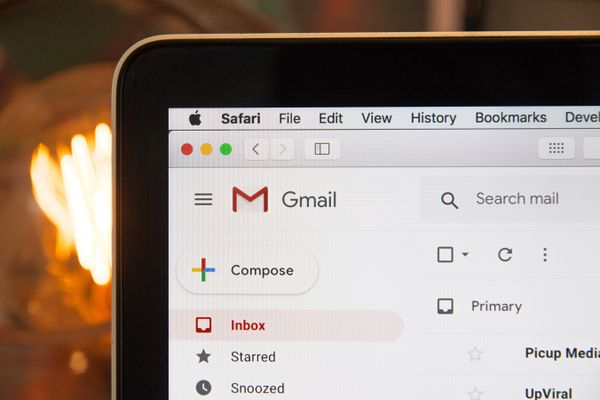

.svg?v=1461f28f41)